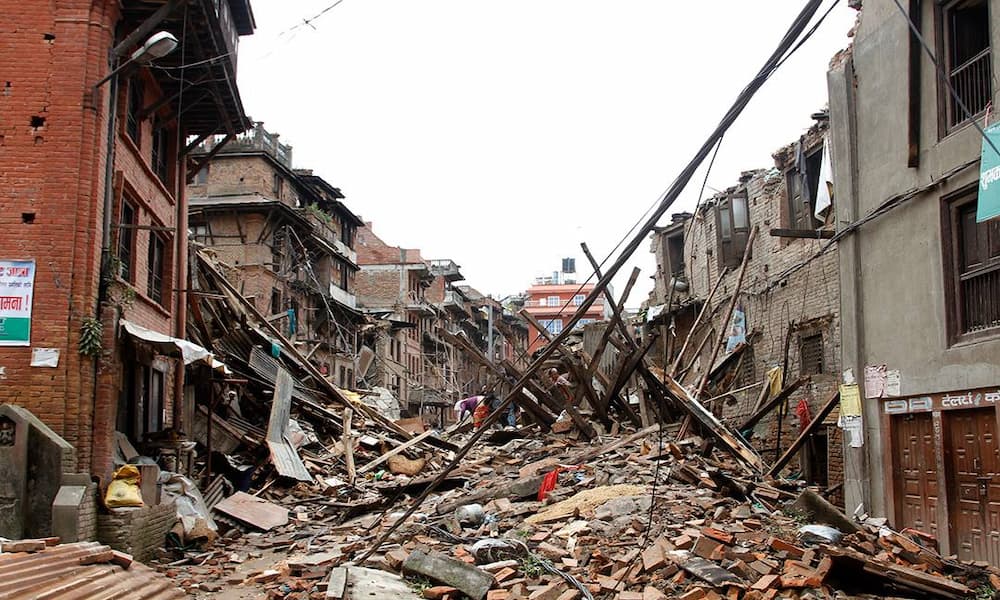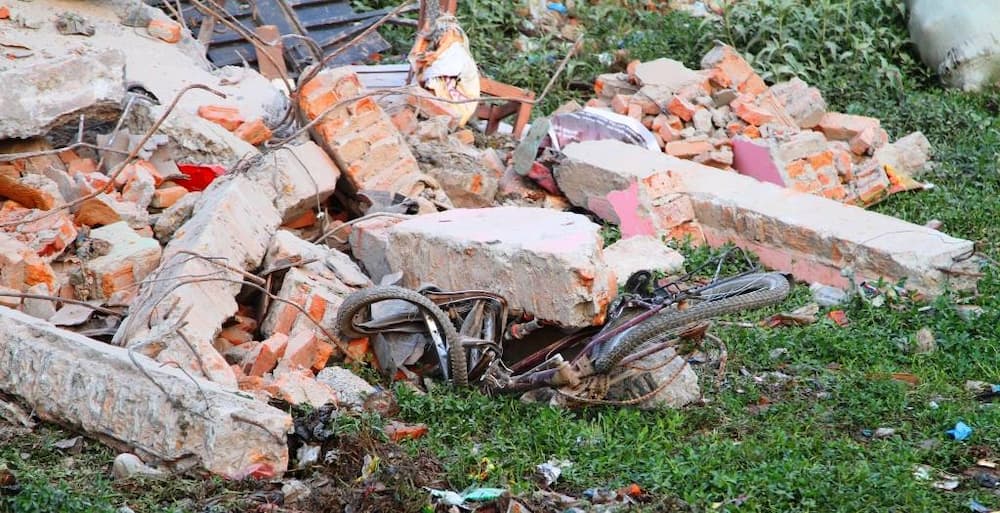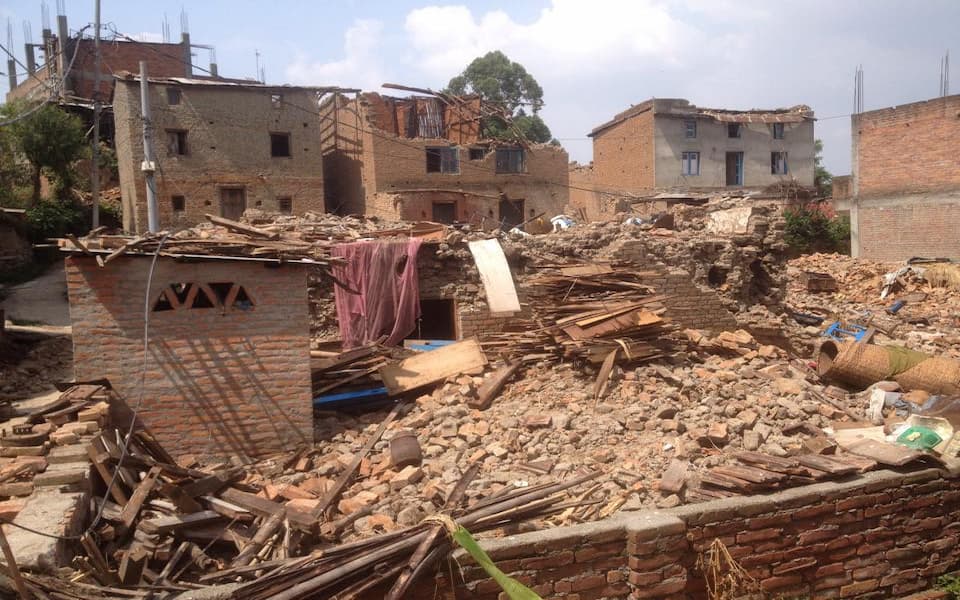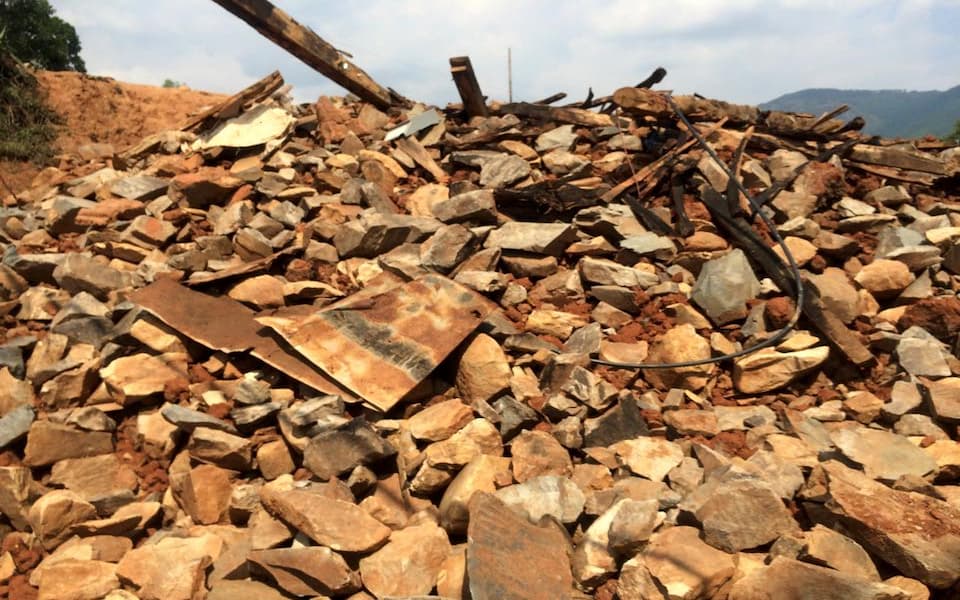What Happened During the 2015 Earthquake in Nepal?
On April 25, 2015, Saturday at 11:56 AM, Nepal faced an effective earthquake with a magnitude of seven. eight. The epicentre became near the small village of Barpak inside the Gorkha District, with a total of 9000 people dying in the country, located about eighty kilometres northwest of Kathmandu. This wasn’t only a nearby catastrophe the tremors were so robust that they have been felt across neighbouring international locations like India, China, and Bangladesh. The entire place changed into shaken—actually and figuratively.
The Science Behind the Earthquake
Nepal sits atop one of the maximum seismically lively regions in the world. This is because it lies along the boundary in which the Indian tectonic plate collides with the Eurasian plate. Over tens of millions of years, the giant pressure from this collision has created the towering Himalayas. But this equal geological pastime also makes the place vulnerable to earthquakes. The 2015 earthquake became the result of an unexpected launch of built-up strain among those plates, causing the ground to shake violently.
Immediate Aftermath
The preliminary earthquake becomes the beginning. What was observed was a sequence of aftershocks, the large of which happened on May 12, 2015, with a significance of 7.3. These aftershocks persisted to terrorize an already devastated population, causing additional harm and making rescue efforts even more challenging. People have been afraid to go back to their homes, fearing the buildings would crumble in some other tremor.

Impact on Lives and Infrastructure
The earthquake’s effect on Nepal has become profound, touching nearly every issue of lifestyle. From human casualties to the huge destruction of buildings and infrastructure, the consequences have been felt deeply throughout the kingdom.
Loss of Life and Injuries
The human toll turned into astonishing. Nearly 9000 lives have been lost, and over 22,000 people have been injured. The tragedy was now not restricted to Nepal my own neighbouring countries also suggested casualties. The death toll could have been even better if the earthquake had struck in the course of the night when most human beings have been indoors. The timing, although devastating, spared many lives.
Destruction of Homes and Buildings
The earthquake made endless houses into piles of rubble. Over 60000 structures in Kathmandu and surrounding regions have been both damaged or destroyed. Historic homes, temples, and cultural historical past websites—some of which had been UNESCO World Heritage Sites—have been reduced to ruins. The loss wasn’t just bodily it became a blow to the cultural heart of the nation. Tourists and guides lost in the mountains Everest Base Camp, Annapurna Base Camp, Langtang, and Manaslu trekking side. Hundreds of thousands of humans have been left homeless, pressured to live in brief shelters with unsure futures.
Impact on Rural Areas
While tons of the media coverage centred on Kathmandu, the agricultural regions were hit just as tough, if not harder. Entire villages have been flattened, and because of the faraway and mountainous terrain, these regions have been rather tough to attain with resources. In some cases, complete communities have been worn out, and survivors have been left remoted for days, expecting help to reach them.
Humanitarian Response
In the wake of one of these huge catastrophes, the world spoke back. Aid poured in from all corners of the globe, and the humanitarian attempt changed into a mammoth. But as with all large-scale operations, it wasn’t without its demanding situations.
Role of the Nepalese Government
The Nepalese authorities, despite their exceptional efforts, were beaten by way of the sheer scale of the disaster. With limited resources and infrastructure already stretched skinny, coordinating the response was a monumental venture. Delays in dispensing aid and relief substances had been common, as the authorities struggled to manipulate the scenario. Yet, no matter those demanding situations, the authorities played a crucial function in laying the basis for healing.
International Aid and Assistance
Countries around the world rallied to Nepal’s useful resources. India, China, the United States, and plenty of others furnished big assistance, sending in rescue teams, scientific elements, food, and water. International agencies just as the United Nations, the Red Cross, and numerous NGOs have been also on the ground, providing important help. These efforts have been important in stabilizing the state of affairs in the immediate aftermath of the quake.
Challenges in Delivering Aid
Delivering aid was no smooth mission. Nepal’s mountainous terrain, blended with the significant harm to roads and infrastructure, made it highly difficult to attain remote regions. Helicopters were frequently the most effective manner to get resources to isolated villages. There have been additional coordination troubles a few of the various businesses worried about, mainly due to inefficiencies and duplication of efforts. Some areas obtained more resources than wished, at the same time as others have been left waiting.

Cultural and Heritage Losses
Nepal is rustic and rich in its way of life and history, and the earthquake had a devastating effect on its cultural background.
Damage to UNESCO World Heritage Sites
Several UNESCO World Heritage Sites had been seriously damaged in the earthquake. The Kathmandu Valley, home to a wonderful series of temples, palaces, and ancient buildings, saw many of its landmarks decrease to rubble. The iconic Dharahara Tower, a loved image of Kathmandu, collapsed, tragically killing many people who were inside at the time. The loss of those cultural treasures becomes now not just a blow to Nepal, but to the arena as an entire.
Efforts to Restore and Rebuild
In the years because of the earthquake, efforts have been underway to restore and rebuild these historical websites. The manner has been slow and painstaking, as it requires the usage of traditional substances and techniques to maintain the authenticity of those historical structures. While it could take years, if no longer many years, to completely restore what has been misplaced, the willpower of the Nepalese humans to retain their cultural identity is unwavering.
Economic Impact
The earthquake didn’t simply shake the floor; it also shook Nepal’s economic system, which turned already fragile.
Immediate Economic Losses
The monetary losses were staggering, expected at around $10 billion—nearly 1/2 of Nepal’s GDP at the time. The destruction of houses, companies, and infrastructure delivered economic activity to a grinding halt. Markets had been closed, alternate was disrupted, and plenty of people misplaced their livelihoods in a single day.
Impact on Tourism
Tourism, a prime supply of revenue for Nepal, became difficult. In the immediate aftermath, vacationers cancelled their journeys, and the drift of traffic to the US dropped dramatically. The harm to cultural websites, many of which are key tourist attractions, in addition, compounded the problem. It took years for the tourism industry to get better, and even these days, it hasn’t again to pre-earthquake degrees.
Long-Term Economic Challenges
The earthquake exacerbated the existing financially demanding situation in Nepal. Resources that could have been used for improvement needed to be diverted to restoration and reconstruction efforts. The loss of livelihoods, particularly within the agriculture and tourism sectors, led to extended poverty and unemployment. For many, the street to monetary healing has been long and tough.
Reconstruction and Recovery Efforts
The journey of rebuilding Nepal has been a long and challenging one, marked by way of success and ongoing struggles.
Government-Led Reconstruction
In response to the disaster, the Nepalese government mounted the National Reconstruction Authority (NRA) to guide the rebuilding efforts. The NRA became tasked with coordinating the reconstruction of homes, faculties, hospitals, and different critical infrastructure. However, the process has been gradual, hindered by way of bureaucratic hurdles, investment shortfalls, and the sheer scale of the paintings that wish to be completed.
Role of NGOs and International Organizations
NGOs and worldwide groups have been instrumental in the reconstruction process. These companies have provided a great deal of needed funding, technical information, and manpower to help rebuild groups. They’ve also focused on constructing resilience inside communities, ensuring that new systems are extra proof against future screw-ups.
Challenges inside the Reconstruction Process
Reconstruction in Nepal has faced several challenges. A lack of funding has slowed progress, and bureaucratic red tape has prompted delays. Additionally, the focus on rebuilding Kathmandu once in a while meant that rural regions, which had been equally tormented by the earthquake, had been left out. There’s also the mission of making sure that new production isn't just an alternative for what becomes misplaced, but is built to face up to future earthquakes.

Lessons Learned and Future Preparedness
The 2015 earthquake changed into a harsh reminder of the importance of catastrophe preparedness. It additionally furnished treasured lessons that are shaping Nepal’s future.
Building Resilient Infrastructure
One of the key instructions from the earthquake is the need for resilient infrastructure. New buildings need to be constructed to resist the effective forces of an earthquake. This means now not just rebuilding what changed into lost, but building higher—making sure that homes, colleges, hospitals, and different vital infrastructures are designed to live on future failures.
Importance of Early Warning Systems
While it’s not possible to expect precisely whilst an earthquake will strike, early caution structures can offer treasured seconds or minutes of being aware. These systems can alert human beings to take cover and allow authorities to shut down utilities like gasoline and electricity, decreasing the danger of fires and explosions. Nepal is working to develop and put in force those systems, mainly in densely populated regions.
Community Involvement in Disaster Preparedness
Disaster preparedness isn’t just about constructing robust infrastructure; it’s additionally approximately ensuring that groups are prepared to reply. Education and focus are critical. Community-level training packages, which train humans the way to reply at some stage in an earthquake, are being expanded across Nepal. These packages encompass drills, emergency reaction plans, and facts on the way to make houses more earthquake-resistant. The goal is to ensure that each household is ready for the subsequent huge quake.
Moving Forward: Hope and Resilience
The 2015 earthquake became a devastating occasion that tested Nepal with impossible approaches. Yet, amidst the tragedy, the resilience and spirit of the Nepalese humans have shone through. The adventure of restoration and rebuilding has been lengthy and fraught with demanding situations, however, it has also been marked by way of brilliant testimonies of hope, team spirit, and progress.
The Spirit of the Nepalese People
One of the most incredible components of Nepal’s healing has been the energy and resilience of its human beings. In the face of huge loss, groups got here together, supporting one another through the darkest of times. This spirit of harmony and perseverance has been a rising force in the country’s restoration efforts. From local volunteers who risked their lives to rescue others, to households who rebuilt their homes with their very own arms, the braveness and resolution of the Nepalese human beings were without a doubt inspiring.
The Role of Youth and Innovation
Nepal’s young people have played a vital role in the USA's recuperation. Young human beings have brought power, innovation, and a clean attitude to the rebuilding technique. Many have been involved in grassroots tasks, the use of technology and social media to coordinate comfort efforts, raise price range and unfold cognizance. Their involvement has no longer only extended restoration but has additionally laid the foundation for a greater resilient and related Nepal.
Continuing Challenges and the Road Ahead
While a lot of progress has been made, challenges stay. Many communities, specifically in far-flung areas, are still suffering to rebuild. Economic recovery has been gradual, and the psychological effect of the earthquake continues to affect many people. The authorities and global organizations are running to cope with these issues, but there is still much work to be done.

Current Status and Future Outlook
As we approach the ninth anniversary of the earthquake, it's critical to mirror on the progress that has been made and the demanding situations that remain.
Progress in Reconstruction
While much progress has been made in the reconstruction efforts, there may be nonetheless paintings to be executed. Many humans are still dwelling in temporary shelters, and a few regions have not begun to be completely rebuilt. However, the development that has been made is a testament to the resilience of the Nepalese people and their determination to rebuild their United States of America.
Ongoing Challenges
There are still many demanding situations that need to be addressed, which include the want for more funding, and better coordination amongst one-of-a-kind groups, and they want to ensure that the reconstruction is performed in a manner that is sustainable and resilient to future screw-ups.
Preparing for the Future
The 2015 earthquake changed into a stark reminder that Nepal is positioned in one of the maximum seismically active areas in the world. While the United States has made substantial strides in healing, preparing for destiny earthquakes remains an important priority. Here are a few key areas where efforts are being targeted:
Strengthening Building Codes and Construction Practices
One of the maximum important instructions learned from the 2015 earthquake is the want for stricter building codes and better enforcement. Many of the buildings that collapsed at some stage in the earthquake were not built to resist this type of effective occasion. Moving forward, new construction must adhere to earthquake-resistant designs and requirements. This consists of each urban and rural region, wherein traditional constructing methods may additionally want to be up to date to ensure safety.
Enhancing Early Warning Systems
While predicting earthquakes with precision is still beyond cutting-edge clinical competencies, improving early caution structures can provide vital seconds or minutes of the word that could save lives. Nepal is running to broaden and combine such structures, mainly in densely populated regions like Kathmandu. These systems would not most effectively alert people to take cowl however additionally mechanically close down utilities consisting of gasoline and energy to prevent fires and explosions.
Community Education and Preparedness Programs
Education and focus are crucial components of catastrophe preparedness. The authorities and NGOs are more and more specializing in community-level training packages that educate people how to reply during an earthquake. These applications include drills, the advent of emergency response plans, and the distribution of information on the way to construct or retrofit houses to avoid more earthquake- strikes.
Investing in Resilient Infrastructure
Building resilient infrastructure is not just about building earthquake-resistant homes; it additionally entails ensuring that essential infrastructure consisting of roads, bridges, hospitals, and faculties can resist natural screw-ups. The reconstruction manner put up in 2015 has emphasized the want for durable infrastructure that can bear future shocks. Additionally, efforts are being made to decentralize infrastructure to ensure that even far-flung areas can get entry to emergency services and substances inside the occasion of every other disaster.
Encouraging Public and Private Sector Collaboration
Effective catastrophe preparedness requires collaboration among the private and non-private sectors. In Nepal, there may be a developing popularity of the role that companies can play in disaster response and restoration. By operating collectively, the authorities and private region can make sure that resources are pooled, and efforts are coordinated to mitigate the impact of destiny earthquakes. This consists of the whole lot from growing emergency response plans for organizations to developing public-private partnerships for rebuilding efforts.

Strengthening Regional Cooperation
Earthquakes don’t admire borders, and local cooperation is vital for effective disaster control. Nepal is working with neighbouring international locations, together with India and China, to proportion statistics, sources, and nice practices for earthquake preparedness and reaction. This local collaboration additionally extends to participating in international initiatives aimed at reducing the chance of herbal failures.
Conclusion
The 2015 earthquake in Nepal turned into a tragedy of big proportions, however, it also highlighted the energy and resilience of the Nepalese people. The road to restoration has been long and tough, but sizable progress has been made. As Nepal keeps rebuilding, the focus is now on getting ready for destiny and making sure that the United States of America is better equipped to handle the next big earthquake.
The classes discovered in 2015 are shaping a greater resilient Nepal—one in which communities are better organized, infrastructure is more potent, and the spirit of cooperation and collaboration is driving efforts to guard the nation’s future. While the reminiscences of the earthquake will continually be a part of Nepal’s history, additionally they serve as an effective reminder of the significance of resilience, preparedness, and harmony in the face of adversity.
Whether you're a visitor, a local, or someone with a deep hobby in Nepal, knowing the effect of the 2015 earthquake and the continuing efforts to rebuild and prepare for destiny is critical. It’s no longer just about remembering the beyond—it’s approximately mastering it and moving forward with a renewed sense of reason and resolution.
Contact us if you have further inquiries about related Trekking packages








